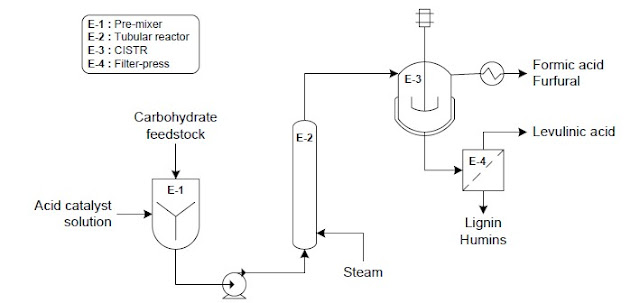Consortium for the development of a wood-to-chemicals biorefinery in Delfzijl
Great news coming from the Netherlands. An
important movement for the sustainable production of 2G sugars, also known as
cellulosic sugars. AkzoNobel, Avantium, Chemport Europe, RWE and Staatsbosbeheer have just
announced the creation of a partnership to develop a wood to chemicals
biorefinery at the Chemie Park
Delfzijl (see press
release). This reference plant will be based on the Zambezi process, a new
technology that has been developed by Avantium, and will be constructed for a
rapid increase of capacity after demonstration. The geographical, technical and
logistical benefits of the Delfzijl area will enable a cost competitive
production that will help accelerate the roll out of the technology. Let us
know more about this technology and the partnership.
The Zambezi process
Avantium has developed a technology to produce
sugars for the production of chemicals and fuels from 2G feedstocks including
forestry residues and agricultural byproducts such as corn stover or bagasse.
In the case of the production of cellulosic ethanol, pure glucose is not
required and high temperature pretreatments followed by enzymatic hydrolysis is
often used. However, those technologies do not deliver the high quality glucose
needed for many biobased chemicals processes in a cost competitive way.
Avantium’s Renewable Chemistries business unit
found that high acid and low temperature technologies were the only class of
process that provided glucose with the right characteristics for biobased
chemicals applications. This kind of technologies has been around for 100 years
and is still the only 2G sugar processes that has been run at commercial scale.
Taking those facts into account, they developed a number of proprietary
innovations to transform this mature technology into the Zambezi process.
Video: The Zambezi Process (taken from the Avantium web page)
Those are some of the characteristics
highlighted in the web page of Avantium:
Feedstocks
|
Forestry
residues (wood), corn stover, bagasse, sugar beet residue and others
|
Products
|
High
purity 2G glucose
from lignocellulosic biomass identical to starch-based glucose. This product
is suitable for both catalytic and fermentative production of sustainable
materials (PLA, PEF, PBAT, PHA).
Wood
extractives such
as tall-oil.
Clean
lignin suitable
for energy generation. Its energy content is significantly higher than that
of woody biomass.
|
Process
|
Biomass
pretreatment not required.
Use of concentrated
acid.
Low
temperature.
Sequential
hemicellulose and cellulose hydrolysis.
|
The partnership
Each partner brings their core strength to the
project in order to cover the whole value chain.
AkzoNobel
|
The plant
will be built on the strong synergies of the infrastructure, utilities and
expertise of the AkzoNobel site in Delfzijl.
|
Avantium
|
It will
provide the process technology.
|
Chemport
Europe
|
It will
bring strategic support from the Northern Netherlands Region working via a
range of initiatives to facilitate the project.
|
RWE
|
It will use
biolignin residue from the Zambezi process for the generation of renewable
energy.
|
Staatsbosbeheer
|
The main
feedstock of the plant will be forestry residues sourced by this company.
|
Further synergistic partnerships and collaborations are currently under development.



